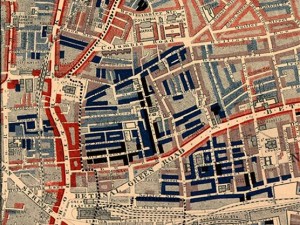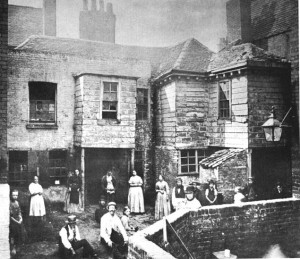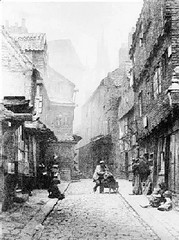It is often thought that he slum is an island of poverty and despair within the context of the institutionalized city. Many times it is forgotten that these “islands” themselves are bigger than the actual city they are a part of. Furthermore, it seems as if the causes or root issues which brings about these slums in the first place is completely forgotten thanks to the power of “city representation” falling in the hands of the elite. As Cynthia Davidson states in Slum Networking, “ This separation or isolation between sectors is of politics in nature and prevents urban equality”. [1]
The city and the slum should not be thought as separate identities. Rather, the occurrences of the slum should be thought at beneficial to those of the city. Through projects of infrastructure in slums one can see changes happen in the rest of the city as well. The whole city should not be thought of as islands of poverty but rather the whole city as a network that can “net” the city together. Furthermore, we should think of slums as not a disease that weathers away the urban fabric but rather “a consequence of distorted development” [1].
Many times the basic necessities of these forgotten “ islands of despair” are left without treatment and as result the slums continue to grow and worsen in condition. In India many slums develop along the path of natural river water networks that run through or around the city. This many times is the case due to the lack of sewerage coverage and plumbing into the homes of these individuals. As result, the river becomes the only form of sewage because it is the only available solution to the problem of water waste these individuals have. Cynthia Davidson explains that, “In India a large part of the population is left out of this man made sewage network, so that the natural drainage courses become a secondary sewage system and, simultaneously, the armature for slum growth. “ [1]
Indore, India has identified the location of slums within the pivotal point of the Khan and Saraswati rivers. To adapt to these natural factors a project utilizing an urban infrastructure path was created in order to take care of the issues regarding sewage, storm drainage, and fresh water services. The project was carried out by the Indore development authority but with additional help from Great Britain’s Department for international development. The cost of the project totaled off to 1,800,00 U.S dollars [1] while the entire water system did not require a single pumping station. The effect of this water infrastructure project allowed families to gain appreciation for their neighborhood because finally they were feeling accepted by the larger city context. No longer were they marginalized citizens but physically and symbolically were connected to the rest of the inhabitants.
The project allowed for the creation of programs that benefited the inhabitants. Community involvement in the project allowed women to participate in the decision process of many of the most important design issues. Moreover, the creation of in house bathrooms lessened the danger that women had to go through when utilizing the river. Youth programs were also created as a result of community involvement which allowed new youth clubs to emerge. Thus, the result of the built project not only created better quality of living for the inhabitants but the decision process was critical in creating a stronger community.
1. Davidson, Cynthia C., ed. 1998. “Slum Networking of Indore City.” In Legacies for the Future: Contemporary Architecture in Islamic Societies. London: Thames and Hudson, 54-65.


